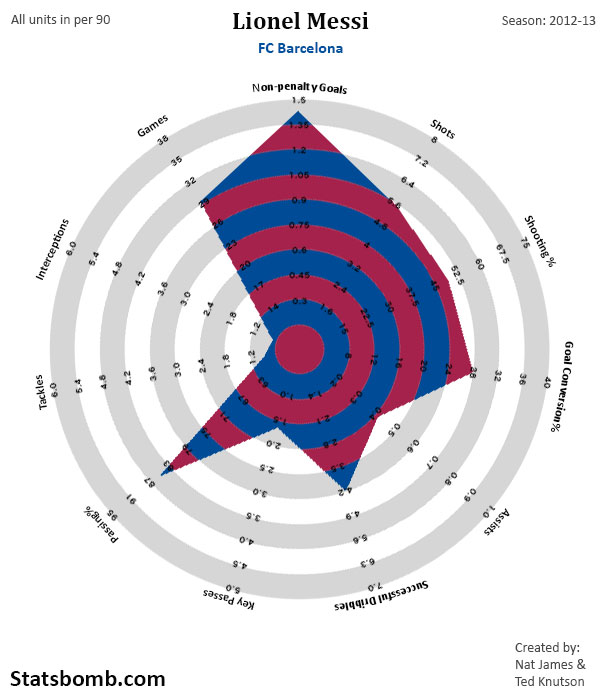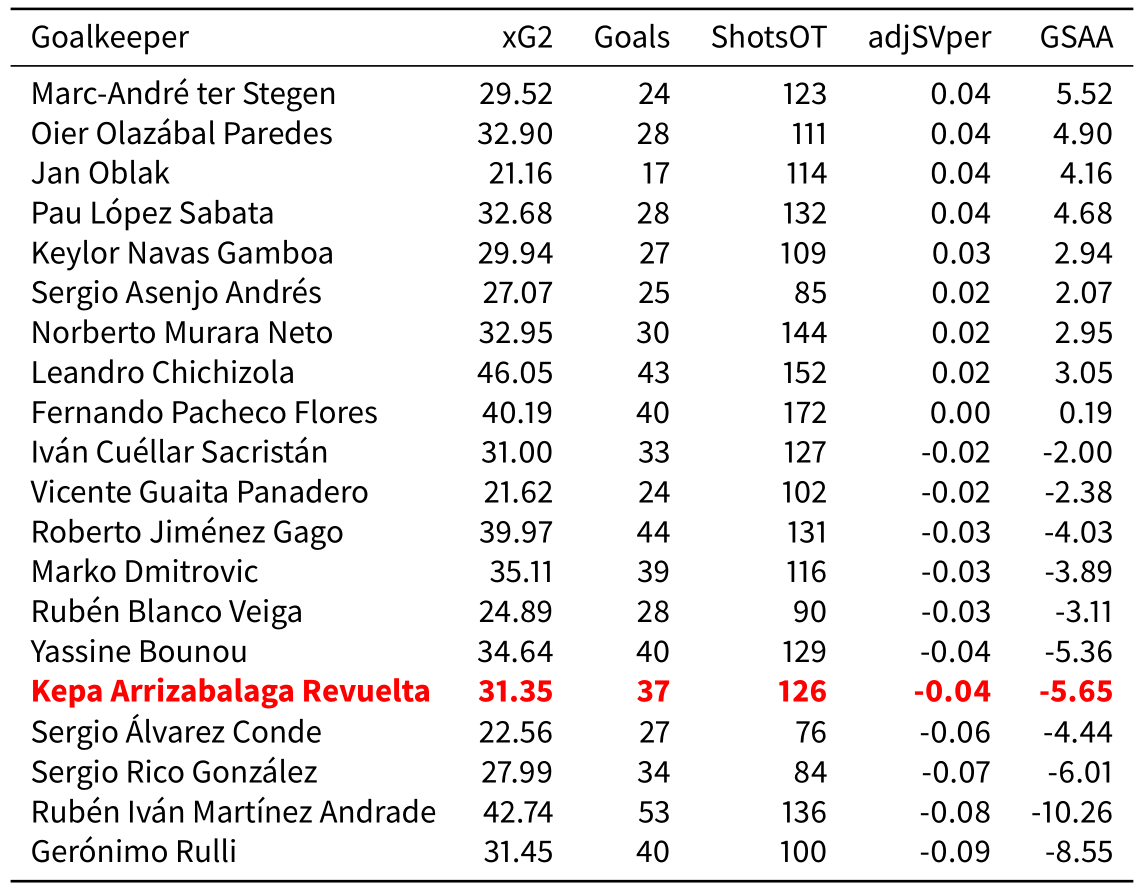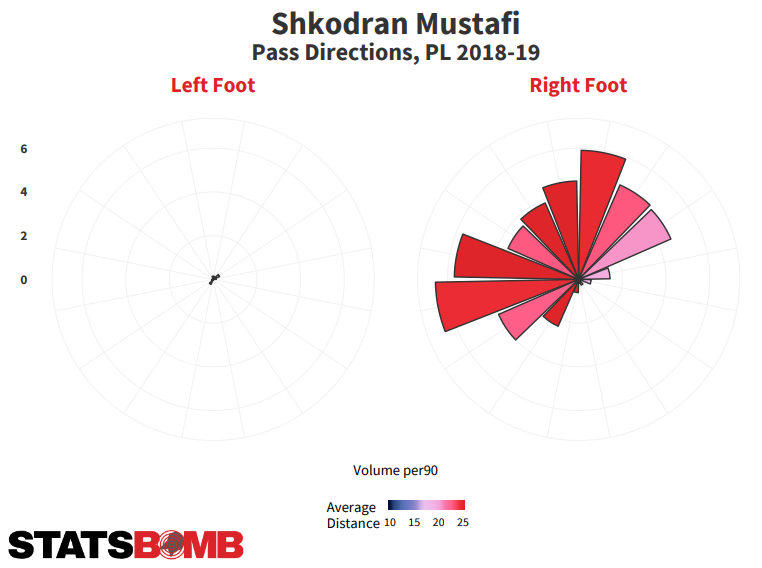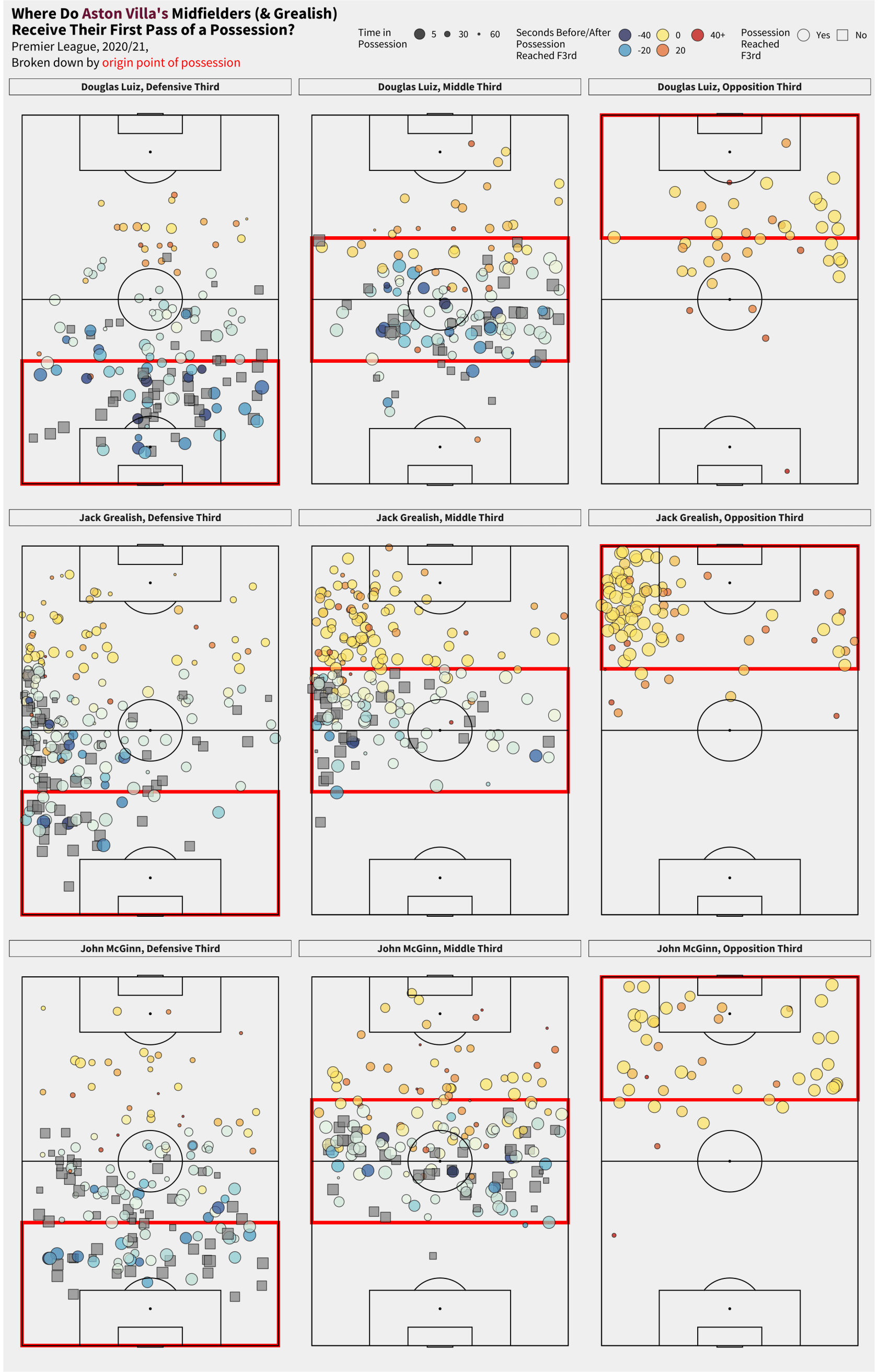Over the summer, we've been marking the 10-year anniversary since the StatsBomb blog was formed. We've interviewed former contributors for our Originals series, published articles from the company Co-Founders on the story behind StatsBomb and lessons learned, and released the 2015/16 Big 5 Leagues on our free data as well as the Icons series containing Johan Cruyff, Diego Maradona, and Pelé.
We thought a nice way to finish would be to look back on some of the best articles that have been published on the site over the ten years. Choosing just ten wasn't easy, but those we've selected were chosen either for their foresight, expertise and invention, or just because they perfectly represent a particular moment in football analytics history.
We'll present them in chronological order, and start with an article from the Co-Founder and CEO.
1) Building a Better Football Club
by Ted Knutson, November 2013
We're going a decade back to kick this list off. When Ted published Building A Better Football Club in 2013, Miley Cyrus had just topped the charts with Wrecking Ball and Mikel Arteta was anchoring the Arsenal midfield.
The football analytics comminity was very much in it's infancy back then: StatsBomb (The Blog) had only existed for a few months, and the 'industry' - if you could call it that at that time - was a fraction of the size it is today.
In this article, Ted lays out four steps that football clubs of the early 2010's could follow to become more efficient. Ten years on, these are seen as the bare minimum requirements to keep up with the competition.
"If you spend the most money on transfers and player wages, you need to make them as efficient as possible. How do you eek the most performance per dollar from this area? Well, you could potentially spend more money on scouting. Orrrr… you could hire a team to crunch numbers from football leagues all over the world in an effort to find the best players possible for as little money as possible."
Building A Better Football Club
2) Radar Love: The Three Best Players in the World
by Ted Knutson, January 2014
This article presents the very first, Year 0, version 1.0 StatsBomb radars produced.
Inside you'll see the three podium finishers in the Ballon D'or voting for 2013: Lionel Messi, Cristiano Ronaldo, and Franck Ribery.

Let's face it, no StatsBomb time capsule would be complete without radars.
Radar Love: The Three Best Players in the World
3) Defensive Metrics: Measuring the Intensity of a High Press
by Colin Trainor, July 2014
The very reason StatsBomb was founded in the first place was to host the work of great football analytics writers.
Colin was one of the greatest.
Ever heard of PPDA? This is the very blog post where the metric was introduced to the world. Colin had this to say about creating the metric in our recent StatsBomb Originals interview with him:
"But the main thing [that inspired me] was watching a football game. I'd have been thinking 'how can I measure this in the data?' For example PPDA. Sitting watching the game and commentators are talking about a press. And then I thought, right: I know it isn't going to be perfect because you only have f24 on the ball data and you don't have any of the off the ball stuff, but could I come up with a metric that's at least going to give some sort of an approximation? PPDA came out of that and I know it's not perfect but it was better compared to what had come previously, which was zero."
Today, PPDA is used by clubs, media and broadcasters across the world, at every level, every day.
Defensive Metrics: Measuring the Intensity of a High Press
4) Goalkeepers: How repeatable are shot saving performances?
by Colin Trainor, October 2014
After inventing PPDA, Colin wasn't done there.
This article introduces the concept of xG2, more commonly known today as Post-Shot Expected Goals (PSxG), a metric that calculates the expected goal value of the shot after it has been struck, to evaluate how difficult the shot was for a goalkeeper to save, and another that is frequently used by analytics professionals today.
Together with Constantinos Chappas, Colin introduces the metric and talks through the repeatability of it when it comes to evaluating a goalkeeper's shot-stopping skill, debunking raw Save% in the process.
"It is only right that a ball that hits the net in the very top corner reflects less badly on the keeper than one which squirms through his body in the middle of the goal; the ExpG2 metric achieves this."
Goalkeepers: How repeatable are shot saving performances?
5) Borussia Dortmund - What's gone wrong?
by Colin Trainor, December 2014
A hattrick for Trainor. Unfortunately, not too long after this Colin was hired to consult a Premier League club on their data and analytics work, never to author a StatsBomb blog again.
December 2014 marked welcome relief for Borussia Dortmund and Jürgen Klopp as they entered the Bundesliga winter break and were able to take some respite from the horror start to the season they'd endured. They were 17th at the time of this article, only off the bottom by virtue of having scored one more goal than Freiburg.

Colin performed a granular analysis of Dortmund's shots for and shots conceded, as well as their pressing numbers, to find out why they'd suffered such a dramatic decline in league position.
It emerged that Dortmund had been incredibly unlucky, a finding that resonated so strongly with the Dortmund fanbase that the club's official twitter account shared the article to their followers. They went on to finish 7th.
Borussia Dortmund - What's gone wrong?
6) Towards A New Kind Of Analytics
by Marek Kwiatkowski, August 2016
We leap forward to the middle of 2016 now, when everyone was coming to terms with Leicester City defying 5000-1 odds to win the Premier League.
At this point in time, analytics was becoming more and more established, but it had also encountered a feeling of intertia due to the slow take-up within the game and the feeling that all the low-hanging fruit had been explored.
Marek wrote this article to advocate for a more theoretical approach and to inspire those in the field to think more expansively than they had done before, outlining where the field needed to go and signposting how it might get there.
"Based on what I sketched above, my suggestion for everyone involved in the field is to be more ambitious, to think more expansively and to not settle for imperfect investigations of lesser questions just because the data seems to be limiting us in this way. It isn't, at least not all the time."
When canvassing opinion from internal people at StatsBomb on potential articles to include in this list, Towards A New Kind Of Analytics was nominated by every single person.
Towards A New Kind Of Analytics
7) Changing How the World Thinks About Set Pieces
by Ted Knutson, February 2017
Even six years ago, the world was still yet to truly come around to the idea of set pieces being important. It was one of the last pieces of truly low-hanging fruit for teams to exploit.
Ted had been advocating for increased attention on set pieces for a number of years, and this article makes the list because a) it has a lot of practical detail, and b) because it wasn't long after this that teams finally started increasing their focus on set pieces.
"I don't think I am overstating it when I say set piece execution is one of the most misunderstood, undervalued, and underexploited edges in the game of football."
And lo, in 2023, we're now in a time when not only are top teams working on their set pieces much more, they've hired specific set piece coaches and analysts.
Changing How The World Thinks About Set Pieces
8) Chelsea’s Rebound Date: Kepa Arrizabalaga
by Derrick Yam, August 2018
In 2018, we launched StatsBomb data, which remains the most rich, detailed and accurate event data in the industry. Derrick Yam was the company's first Data Scientist, and he dug into our new goalkeeper data to analyse the transfer of Kepa Arrizabalaga, who'd just signed for Chelsea for a record £71m fee for a goalkeeper.
We won't spoil it, but, now we know how Kepa's Chelsea careeer played out, Derrick's methodology and conclusions can only be described as an absolute home run.

"But at the end of the day, in the most expensive goalkeeper transfer of all time, we would expect to see something that makes sense. Something that makes Kepa shine. Something that justifies £71M. At that price, I don’t see the value in Kepa Arrizabalaga.
We wait for years from now, to find out how wrong I am."
Chelsea's Rebound Date: Kepa Arrizabalaga
9) Pass Footedness in the Premier League
by James Yorke, April 2019
This was another article exploring an aspect of the StatsBomb dataset that was novel to the industry and thus previously untapped: pass footedness and how players perform on each foot.
Typical of a James Yorke article, this analysis contains plenty of creative visualisations to display the data and findings. James explores team footedness profiles, two-footed players, and how being one-footed can limit your passing angles.

He also advocates for Harry Arter to be included in the 2018/19 PFA Team of the Season? You'll have to read the article to find out why.
Pass Footedness In The Premier League
10) Aston Villa: 2020/21 Deep Dive
by Euan Dewar, February 2021
Our final entry on the list, and another that was unanimously nominated by the judging panel.
We regularly see Euan's 2021 deep dive into Aston Villa referenced as a lesson in data manipulation and visualisation. There are no fewer than 33 data visualisations in this article.
33.
Thirty. Three.
Each of them exploring a granular aspect of Aston Villa's performances and style of play.

Legend has it the code Euan wrote to manipulate the data and create the viz is longer than the article itself.
Aston Villa: 2020/21 Deep Dive
Closing Thoughts
We're extremely grateful to have had so many talented and expert analysts share their work on the StatsBomb website over the years, many of whom have gone on to achieve great things in the industry and will continue to do so.
If you'd like to read more, our recent StatsBomb Originals series spoke to many original contributors to the site, reflecting on the work that had come before but also the future of football analytics and where it can go next.
